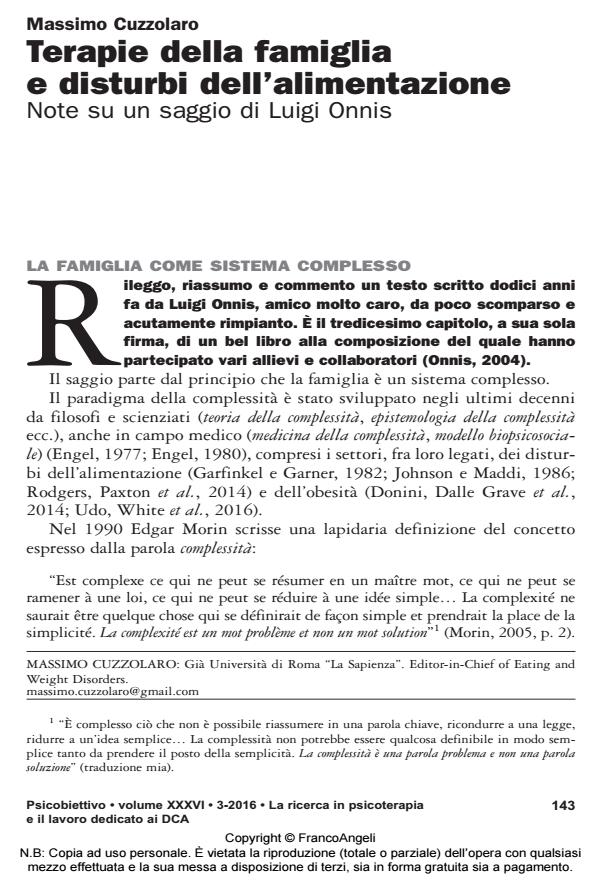Family therapies and eating disorders. Notes on an essay
Journal title PSICOBIETTIVO
Author/s Massimo Cuzzolaro
Publishing Year 2016 Issue 2016/3
Language Italian Pages 11 P. 143-153 File size 108 KB
DOI 10.3280/PSOB2016-003009
DOI is like a bar code for intellectual property: to have more infomation
click here
Below, you can see the article first page
If you want to buy this article in PDF format, you can do it, following the instructions to buy download credits

FrancoAngeli is member of Publishers International Linking Association, Inc (PILA), a not-for-profit association which run the CrossRef service enabling links to and from online scholarly content.
The article is a rereading, twelve years later, of an essay published by Luigi Onnis in 2004. The essay was dedicated to the myths and family ghosts in the theoretical framework of systemic-relational psychotherapy model and in the clinical area of food disorders (anorexia nervosa and bulimia nervosa). After a reflection on the concept of family as a complex system, the author focuses on the transition, in the history of family therapy, starting from the first cybernetic to the cybernetics of the second order, that is, from the pragmatic interactions observable here and now to the semantics of human behavior. The study of the "myths" and "family ghosts" in a diachronic and transgenerational perspective is enrolled in this transition as an important enrichment. The use of body language in the therapeutic setting through "family sculptures in time" opens, finally, a few comments on alexithymia concepts, symptom formation, contemporary trends and tendencies in the treatment of eating disorders.
Keywords: Complex Systems; Family Therapy; Eating Disorders; Alexithymia; Symptom
Massimo Cuzzolaro, Terapie della famiglia e disturbi dell’alimentazione. Note su un saggio di Luigi Onnis in "PSICOBIETTIVO" 3/2016, pp 143-153, DOI: 10.3280/PSOB2016-003009